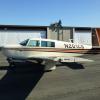So Long, Farewell, Auf Weidersehen, Goodbye
-
Members Online
- richardbrochu27
- prillayo03
- LANCECASPER
- Ragsf15e
- BigD
- Ricky_231
- Jim F
- smccray
- bigmo
- 1967 427
- BobbyH
- Rsmithref
- haymak3r
- TCC
- Yanyen
- FlyingDude
- Glen Davis
- kortopates
- gdwinc
- PeteMc
- Bolter
- Sabremech
- Ibra
- 1980Mooney
- JB2000
- 0TreeLemur
- Dick Denenny
- KSMooniac
- Danb
- Rwsavory
- kechmant
- Adam Belle
- Stanton R
- philiplane
- camshaft


Recommended Posts
Join the conversation
You can post now and register later. If you have an account, sign in now to post with your account.